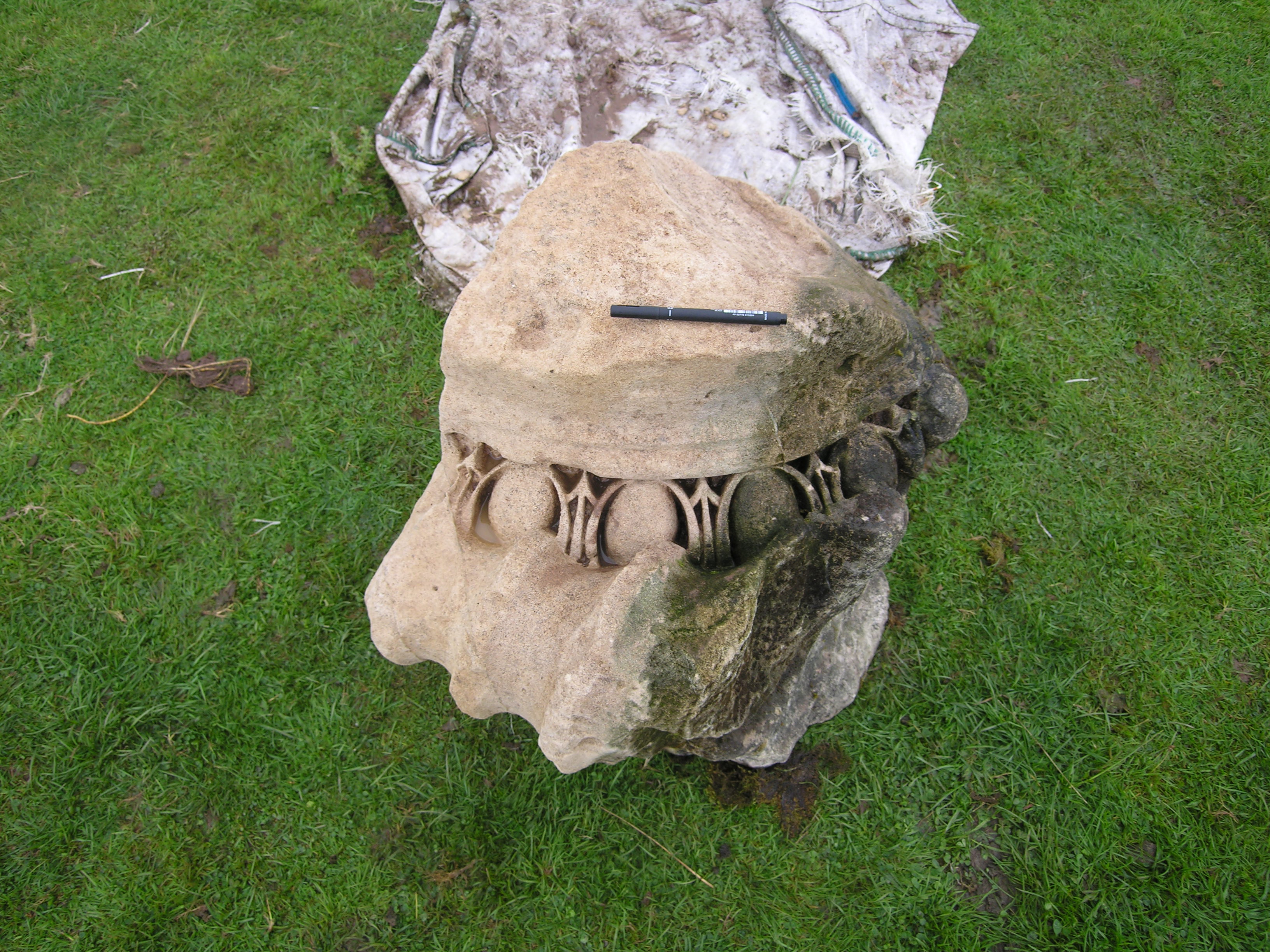Gellir lawrlwytho cynnwys at ddefnydd anfasnachol, megis defnydd personol neu ar gyfer adnoddau addysgol.
Ar gyfer defnydd masnachol cysyllwch yn uniongyrchol gyda deilydd yr hawlfraint os gwelwch yn dda.
Read more about the The Creative Archive Licence.
Disgrifiad
Once the stone had been removed from its unrelenting resting place the group was taken by surprise. At first this sodden, muddy lump of stone looked unimpressive, a mass of lichen, moss and brown gunk desperately clinging on trying not to give any hints of what this stone could be. However through the clag, intricate carving and elaborate detail could vaguely be seen. After heaving the heavy lump into a wheel barrow and returning back to the excavation, the finds officer Marie Woods began to wash the stone which truly revealed not only what it was but also the grandeur of what it once looked like. The stone itself was the ornamental top of a colonnade that adorned William Paxton’s 18th century mansion. What took everyone by surprise and I’m sure you’ll agree from the photograph the contrast in colour between the submerged portion and the lichen rich surface as well as the magnificence and detail of the “egg and dart” carving. Although this had been a great discovery, bringing to life the grandeur of Paxton’s hall, further questions were raised. Primarily how did this beautiful piece of decoration end up abandoned and buried in a muddy field half a kilometre away? My own theory is that when the hall was demolished in the 1950’s the farmer who resided at Waun Las took a great deal of rubble and hall detritus and buried them in the field. Why? Well if you look at the aerial photograph of the site you will notice that there are a series of rectilinear features that are clearly identifiable with the gorse that is growing thickly within them, a sure sign that these features are potentially deep and waterlogged. What these features could be remains uncertain. One theory is that they are drainage feature; another is that they are a water management system associated with the original Middleton Hall, both of which are entirely credible. It seems to me that at some point in the 1950’s the local farmer wanted to make this field less water logged and, perhaps to achieve this, dumped a load of material from the recently demolished hall into the field. Perhaps we will never know however there could be more pieces of Paxton’s hall submerged in this boggy field. Perhaps one day we will recover them.


Oes gennych chi wybodaeth ychwanegol am yr eitem hon? Gadewch sylwad isod
Sylwadau (0)
Rhaid mewngofnodi i bostio sylw